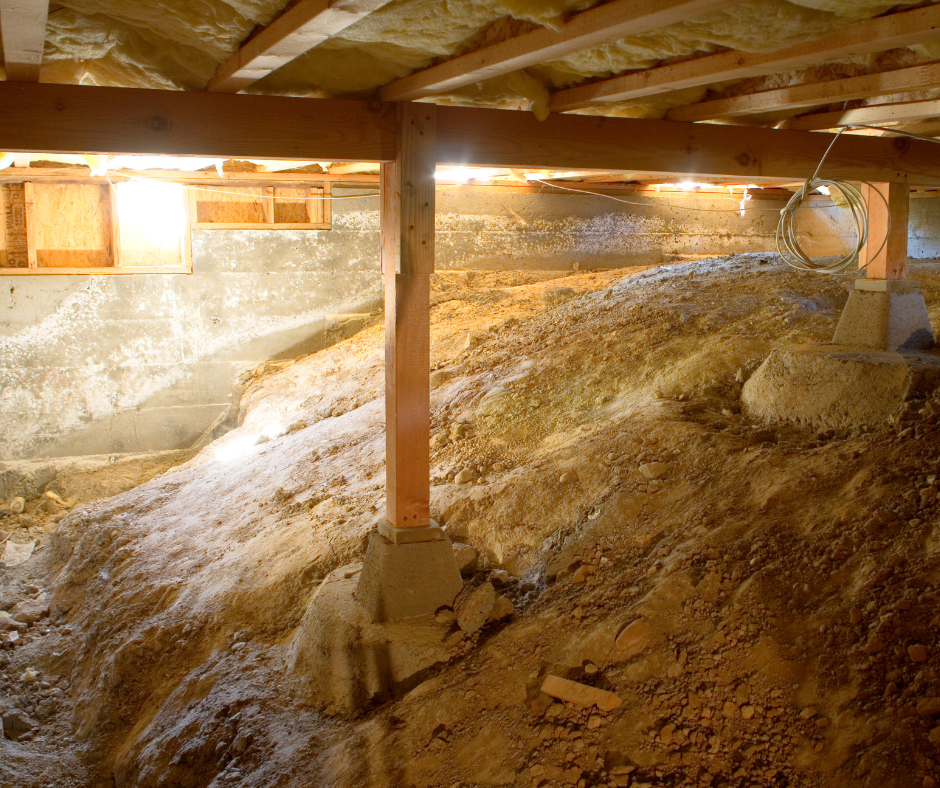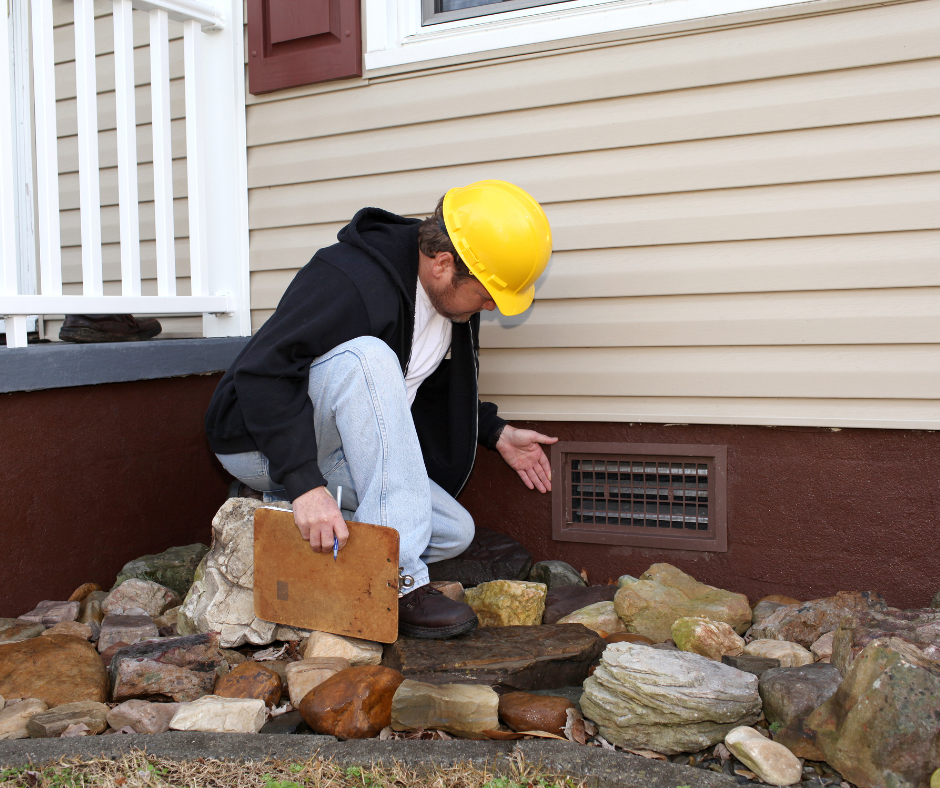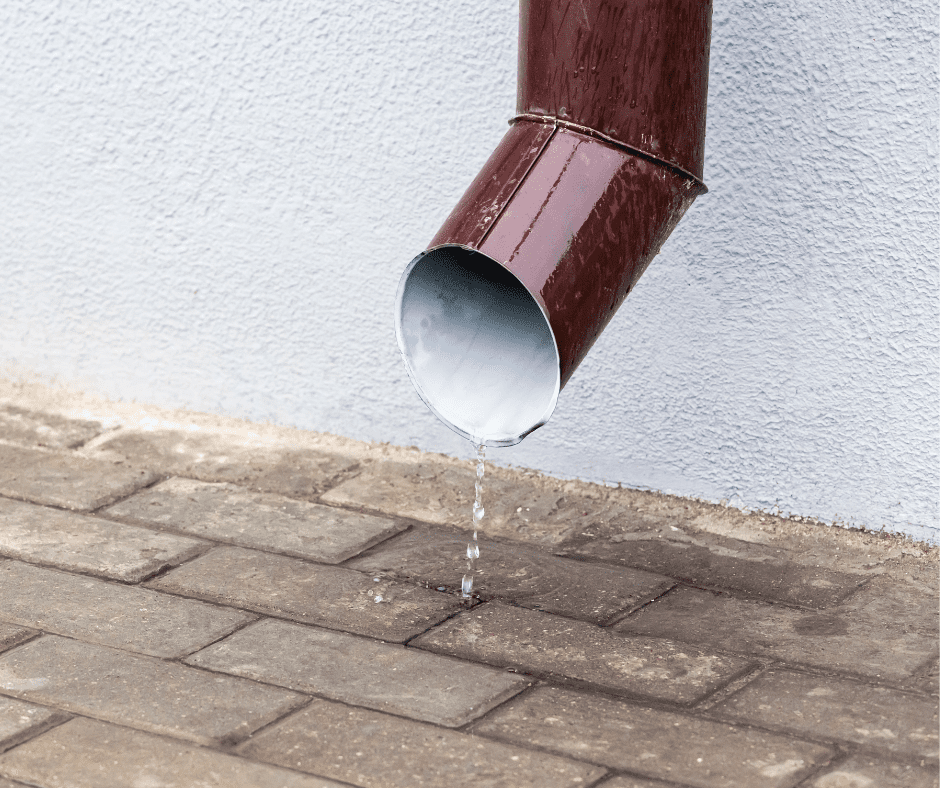
Dealing with mold in a crawl space during the colder months can be a challenge. Winter often brings higher moisture levels due to snow, ice, and condensation, making crawl spaces a prime breeding ground for mold. Understanding how to get rid of mold in a crawl space efficiently and safely can help protect your home and health.
Is Crawl Space Mold Common In The Winter?
Unfortunately, the crawl space is one of the most common places for mold to grow in the winter months. Cold climates like the Philadelphia and South Jersey areas, that get a lot of precipitation, create a great environment for mold spores to collect and grow. As a place that homeowners rarely visit, this breeding ground for mold has plenty of food sources and can go unnoticed for years.
What Causes Crawl Space Mold in the Winter?
Mold thrives in damp, dark, and poorly ventilated spaces. During winter, these conditions are amplified by:
- Condensation: Cold air outside and warm air inside your home can create condensation on crawl space surfaces. During the winter months, homes are heated against the cold temperatures outside while the crawl space acts as an insulation barrier between the cold ground and your home.
- Excess Moisture: Snowmelt, rain, or plumbing leaks may seep into crawl spaces unnoticed. If there is poor air circulation and any accumulated moisture, crawl space mold will form and stick around.
- Poor Ventilation: Crawl spaces with limited airflow trap moisture, making them ideal for mold growth. In winter, residents are less likely to inspect their crawl space vents, leading to damaged or blocked vents that block beneficial airflow that would prevent mold spores from landing on surfaces. Pair the lack of air flow with any moisture from leaky pipes or ground seepage, and mold is there to stay.
Recognizing these causes is the first step in tackling mold in your crawl space effectively.
What Are The Signs Of Crawl Space Mold?
Before removing crawl space mold, ensure you’ve identified it correctly. Here are some common signs:
- Musty Smell: Mold often produces a distinct, earthy odor. Despite being cold, the air will feel stagnant and stuffy. Any air that does escape the infected crawl space will have a musky, mildew-like smell.
- Visible Growth: Black, green, or white spots on wood, insulation, or walls are typical indicators. Black mold tends to be the most common type of crawl space mold found beneath the home, resembling a slimy, dark green, or black substance.
- Increased Allergy Symptoms: Sneezing, coughing, or itchy eyes could signal mold presence. Cracked or poorly sealed ducting in the subfloor space has the potential to bring the spores into the home through the HVAC system and with the potential to cause health issues to those living in the home.
If you’re unsure, hire a professional for mold testing to confirm its presence and severity.
How Fast Does Crawl Space Mold Grow?
Crawlspace mold can begin to develop 24 to 48 hours after adhering to a damp surface. It’s important to remember that even a small amount of mold is too much. If conditions are right, such as darkness, warm temperatures, and moisture, mold colonies will begin to digest the organic material it has landed on. Spreading by the production of spores in the trillions, it will quickly begin to destroy the surface as it consumes.
Step-By-Step Guide: How To Get Rid Of Mold In Crawl Space?
1. Prioritize Safety Before Starting
Mold removal can expose you to harmful spores, so take proper precautions:
- Wear an N-95 mask or respirator.
- Use gloves, goggles, and full-body protective clothing.
- Avoid stirring up mold spores unnecessarily by working methodically.
2. Identify and Stop the Moisture Source
Mold will keep returning unless you eliminate excess moisture. Check for:
- Plumbing Leaks: Inspect pipes and fix any leaks.
- Foundation Cracks: Seal gaps in walls or flooring where water can enter.
- Inadequate Drainage: Ensure that rainwater and snowmelt are directed away from your foundation.
The professional technicians will seal any wall cracks and ensure any gutters and downspouts direct water away from the home. And finally, they will add a plastic vapor barrier to cover the floor and walls.
3. Remove Contaminated Materials
The professionals remove the mold by thoroughly cleaning any surface that has mold growing on it. They take care to contain the dispersion of the spores during remediation so the mold doesn’t just move from one area to another. Take out any moldy debris, such as insulation or wooden materials, that cannot be cleaned. Place these in sealed plastic bags to prevent contamination during disposal. Any wet or damp insulation or other materials should be removed right away and you should add a plastic moisture barrier over the ground and walls.
4. Apply Mold Removal Treatments
Use an EPA-approved mold cleaner or natural alternatives like vinegar and baking soda.
- DIY Method: Spray the mold cleaner onto affected areas and scrub with a stiff brush.
- Professional Help: For widespread mold, consider hiring a mold remediation company to ensure thorough removal.
5. Dry the Crawl Space
Mold thrives in moisture, so drying out your crawl space is critical. Use:
- Dehumidifiers: Reduce humidity levels to below 50%.
- Fans: Improve airflow and speed up drying.
- Heaters: In winter, supplemental heat can help remove excess moisture.
How To Prevent Crawl Space Mold In The Future?
Seal and Protect Your Crawl Space
Preventing crawl space mold starts with good ventilation. Keep crawl space vents clear of debris like fallen leaves, mulch, lawn clippings, or snow buildup. Repair any damaged vents that might invite rodents to seek refuge from the cold winter under your home, bringing in food scraps, building nests and harboring crawl space mold.
Additionally:
- Encapsulation: Install a crawl space vapor barrier to block moisture.
- Insulation: Use mold-resistant insulation to reduce condensation. Use caulk or expanding foam to seal openings where moisture may enter.
- Ventilation: Ensure proper airflow by installing vents or a crawl space fan.
Regular Inspections
- Keep your crawl space dry by repairing any leaking pipes and ducts.
- Inspect the crawl space seasonally for signs of water intrusion or mold growth.
- Keep gutters and downspouts clear to direct water away from your home.
- Consider installing a sump pump or self draining dehumidifier if your area is prone to flooding, to quickly dry out the space before crawl space mold begins to form.
Monitor Humidity Levels
Use a hygrometer to monitor the humidity in your crawl space. Aim to keep it below 50% year-round.
How Long Does It Take To Remove Mold From A Crawl Space?
While each home and situation is unique, plan on 1 to 10 days for the crawlspace mold remediation process. This process includes identifying and eliminating the source of the moisture and then preparing the space for remediation to adequately block mold spores that get dislodged during the process. All of the affected surfaces will receive thorough cleaning with professional-grade cleaning products and highly specialized equipment. Finally, it’s important to restore and repair any damaged surfaces or structures before preparing the crawlspace to prevent any future crawlspace mold growth.
What Are The Dangers Of Mold In Crawlspace?
Crawl space mold can directly affect both your home and the health of your family. The most common and dangerous crawlspace mold is Stachybotrys atra, also known as black mold. This mold is a slimy, greenish black substance that grows on cellulose surfaces that get repeatedly wet. Any kind of wood provides the organic nutrients this type of crawlspace mold needs to propagate.
- Health Risks: Research from FEMA describes the typical symptoms from mold exposure including respiratory problems, nasal and sinus congestion, eye or skin irritation, aches and pains. Black mold can also affect the nervous system causing headaches, memory loss, and mood changes.
- Structural Damage: Mold weakens wooden beams and supports, threatening your home’s integrity. Mold spores that float in on the breeze can attach to surfaces like insulation, support beams or subflooring and begin to weaken the integrity of wood and other organic materials that serve as a food source for the mold.
- Energy Loss: Mold-related moisture can reduce insulation effectiveness, increasing your heating costs.
Addressing mold quickly and thoroughly can save you time, money, and health issues in the long run.
When To Call A Professional For Crawl Space Mold Removal
While minor mold infestations can often be handled with DIY methods, severe or widespread mold requires professional remediation. Mold remediation specialists can:
- Conduct thorough mold testing and inspection.
- Safely remove mold using advanced tools and techniques.
- Offer long-term solutions to prevent mold from returning.
At MSR Restoration, we understand the unique challenges of dealing with crawl space mold in the winter. Your health and safety is our #1 priority at MSR Restoration and we have an expert team with years of experience and highly specialized equipment necessary to rid your home of crawlspace mold.
Don’t wait for mold to cause more damage. Contact us today for a free inspection and take the first step toward a mold-free home!


